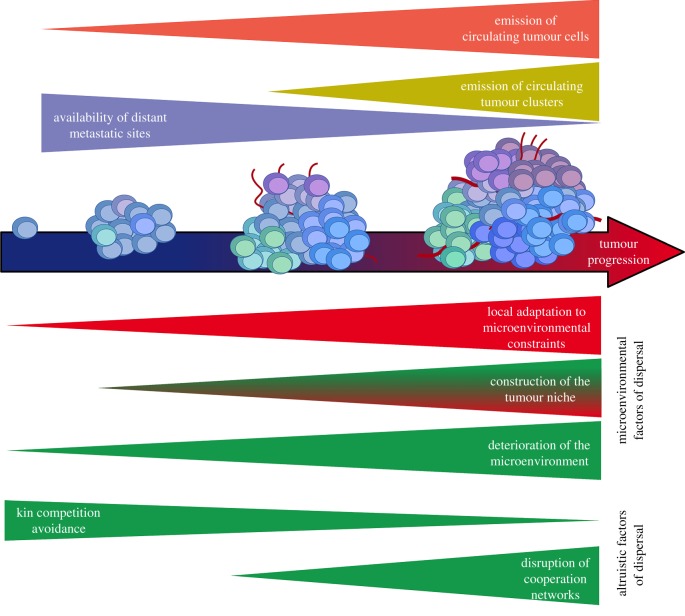Figure 2.
Causes of cancer cell dispersal over time. Over cancer progression, more and more CTCs emerge from the primary tumour, soon to be replaced by CT clusters in the lymph and blood flow. The availability of metastatic sites thus decreases with the settlement of the first micrometastases. The drivers of cancer cell dispersal (displayed in green) involve micro-environmental factors and altruism between cancer cells. On the one hand, the deterioration of the primary tumour micro-environment and the increased access to vessels (due to the tumour niche construction) increase the likelihood that cancer cells join the lymph and blood flow, whereas niche construction and local adaptation decrease the benefits of dispersal. On the other hand, the diversification of subclones during the primary tumour growth decreases the pressure of kin competition avoidance, but increase the risk of disruption of cooperative networks. (Online version in colour.)

